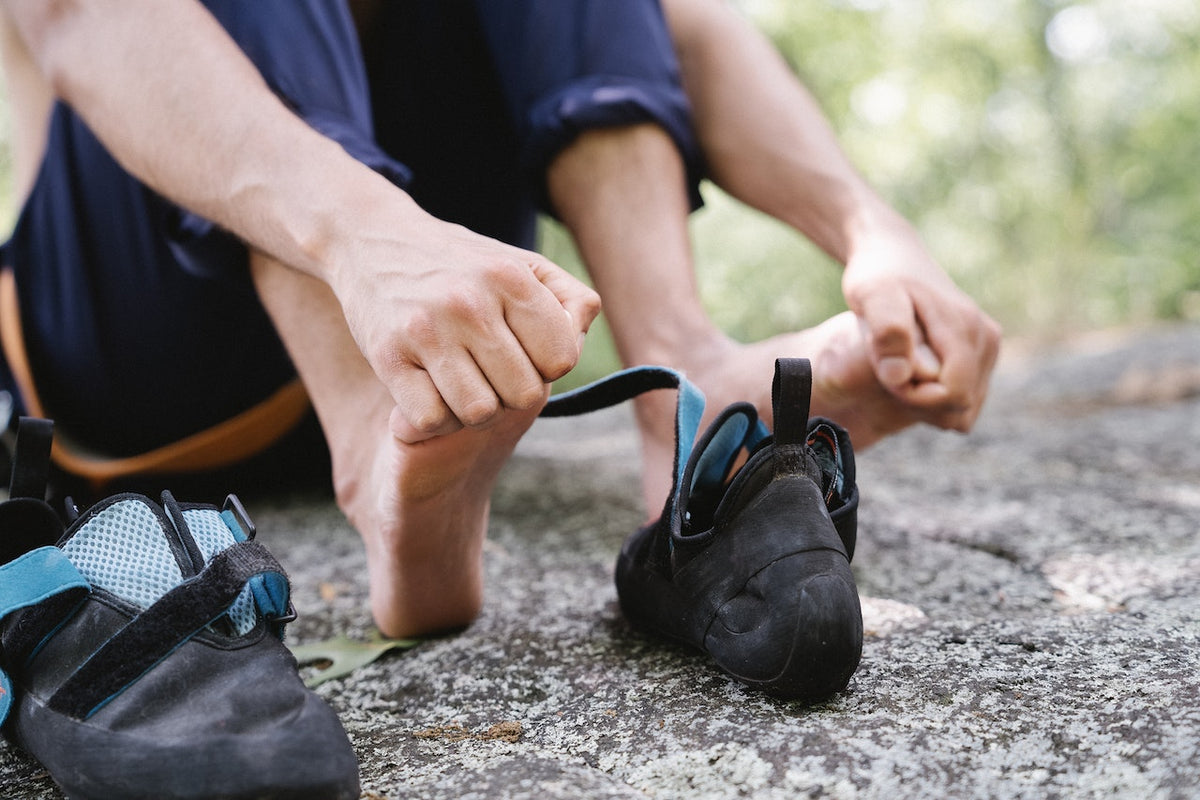
Foot pain is common among adults in the US according to one study where 77% of the participants admitted to feeling foot or heel pain at some point. Oftentimes foot pain goes undiagnosed as many Americans are reluctant to visit a podiatrist. Foot pain could be attributed to overuse, wearing improper footwear, or injury. But when foot pain persists for no obvious reason, there’s a chance you could be experiencing what’s known as Baxter’s neuropathy.
Keep reading to learn more about Baxter’s neuropathy and what you can do about it.
Baxter’s neuropathy, also called Baxter’s nerve entrapment, is a nerve entrapment issue with the inferior calcaneal nerve (ICN). The ICN is also referred to as Baxter's nerve, hence the name, Baxter’s neuropathy. The Baxter’s nerve is a branch of the lateral plantar nerve that runs along the bottom of the surface of the foot under the arch and towards the outer heel of the foot.
Baxter’s neuropathy occurs when the ICN, or Baxter’s nerve, is compressed. The nerve is unable to receive proper amounts of oxygen or nutrients due to this compression, resulting in nerve damage. Neuropathy is a term used to describe damage to nerve cells that results in symptoms such as pain, tingling, loss of sensation, and weakness in the affected area.
The symptoms of Baxter’s neuropathy closely resemble a more common foot pain problem known as plantar fasciitis. Baxter’s neuropathy causes symptoms such as:
Chronic foot pain usually on the inside of the heel
Numbness on the outside part of the foot or heel (usually after standing for long periods)
Radiating or burning pain underneath the heel of the foot
Symptoms usually become worse after periods of activity
Baxter’s neuropathy is often mistaken for plantar fasciitis because of the similarity of symptoms. However, it’s estimated that Baxter’s neuropathy is responsible for at least 20% of heel pain disorders. Baxter’s neuropathy is usually diagnosed after typical treatments for plantar fasciitis and other foot pain disorders are ineffective. It can also be detected through an MRI scan.
When nerve damage occurs in the foot, the ADM muscle (abductor digiti minimi muscle that lies along the lateral side of the foot) can atrophy and fatty edema deposits will build up on the muscle. MRI scans can detect ADM atrophy and determine Baxter’s neuropathy is likely the cause.
Baxter’s neuropathy is caused by the compression, entrapment, or impingement of the ICN (Baxter's nerve). Some of the reasons why this may occur include:
An injury to the foot that causes swelling underneath the heel
Foot pronation (when the foot rolls inwards instead of outwards)
Improper footwear (such as shoes that are too tight or uncomfortable)
Atrophy of the heel pad
Having flat feet
Repeat overuse or trauma to Baxter’s nerve during activities like running, dancing, etc.
Factors such as obesity may further cause damage and discomfort to the feet.
Treatment for Baxter’s neuropathy is generally aimed at treating the cause and reducing painful symptoms. You should stop wearing any footwear that aggravates or compresses the foot or heel, such as tight shoes or heels. Comfortable sneakers or shoes with proper arch support or cushion are best for those suffering from chronic foot pain.
You should also refrain from any physical activity that may be contributing to your foot or heel pain. Rest your feet as often as possible and refrain from putting weight on them when you can. If you are overweight, consider a healthy diet and exercise program to lose excess weight that is placing pressure on your damaged nerve.
Unfortunately, there is no straight-shot cure for Baxter’s neuropathy but there are treatment options for reducing pain and discomfort. Some of the more common treatment options include:
Icing your foot
Physical therapy (stretching and strengthening your foot)
Foot strapping
Custom orthotics to improve your foot mechanics
Ultrasound therapy and heat
Pain relieving medications
Injections of local anesthetic and corticosteroid
Surgery (in severe cases when all treatment options prove ineffective)
Baxter’s neuropathy is a nerve damage disorder. Nerve cells can become damaged due to physical trauma or because of lack of nutrients. By improving the nerve cell’s ability to receive nutrients, some nerve damage may be reduced or reversed. According to studies, there are certain vitamins and minerals that can help to protect and repair nerve cells.*
Consuming these nutrients in supplement form allows your body to receive these nutrients more easily and in larger doses. Some of the most effective nutrient supplements for neuropathy include:*
When combined, these nutrients may help support general nerve health.* NeuraZenx is a multivitamin formulated specifically for targeting nerve health. It contains 20 different nutrients (including those mentioned above) that have been studied for their effectiveness in treating nerve pain disorders. *
Including a multi-nutrient supplement into your foot pain treatment plan may help support your nerve health naturally.* Supplements are a non-prescription, non-addictive route that are generally safe for most people. However, be sure to do your research before purchasing supplements from anywhere.
For supplements to be safe and effective, they must be dosed properly and not in combination with counteracting ingredients.* Buying supplements can be tricky. It’s in your best interest to purchase from a supplement company like ZenNutrients that follows Good Manufacturing Processes (GMP) and works with FDA-registered labs. These certifications help to ensure you are getting a safe product.
If you think you are suffering from Baxter’s neuropathy, get properly diagnosed by a doctor or podiatrist. Listen to your doctor’s treatment suggestions and consider taking supplements to support general nerve health. With proper treatment, you can reduce your foot pain symptoms and lead a more normal life.
* These statements have not been evaluated by the Food and Drug Administration. These products are not intended to diagnose, treat, cure or prevent any disease.